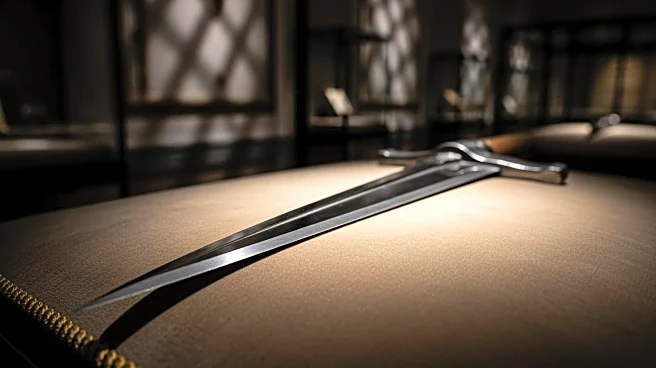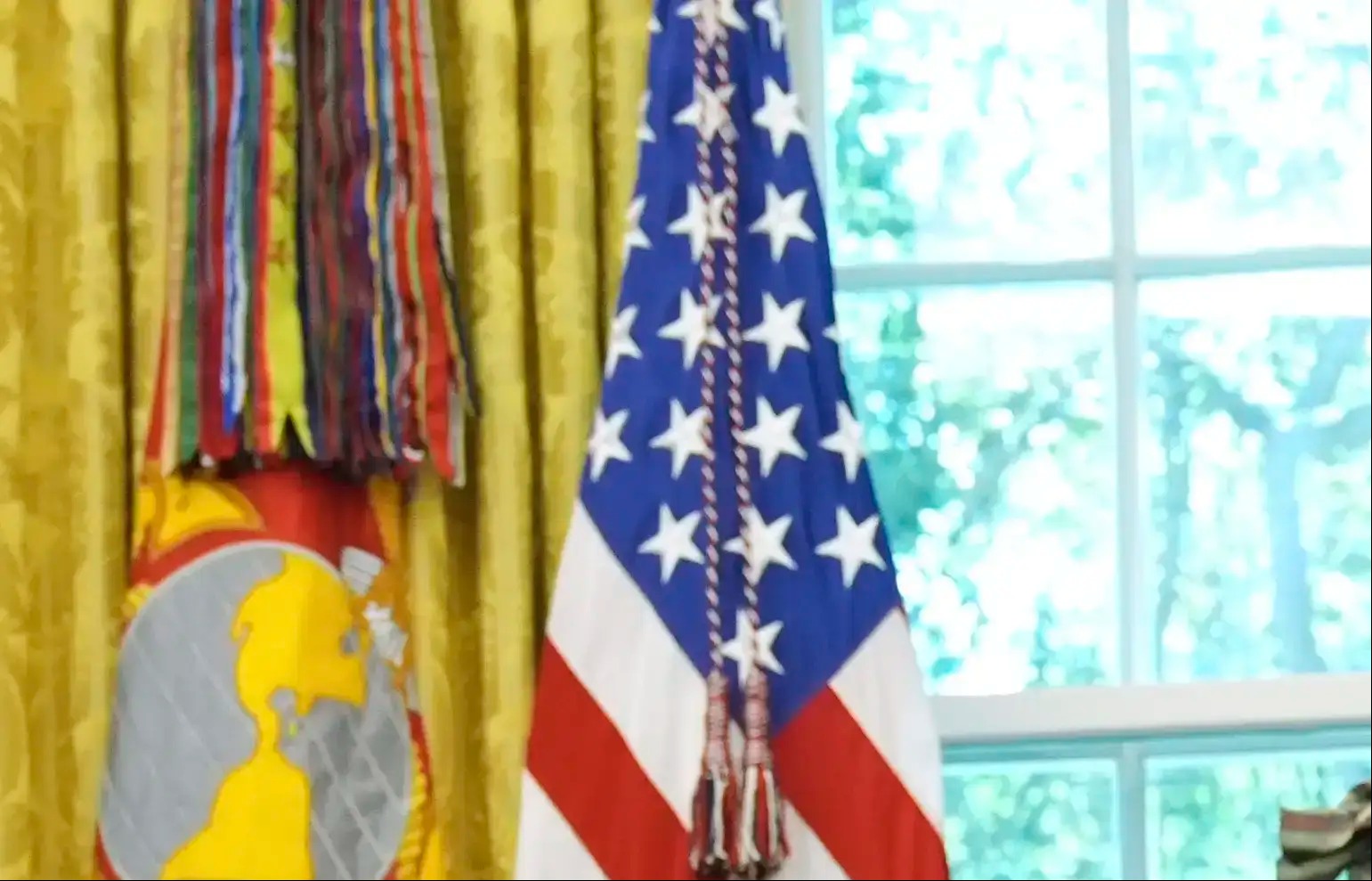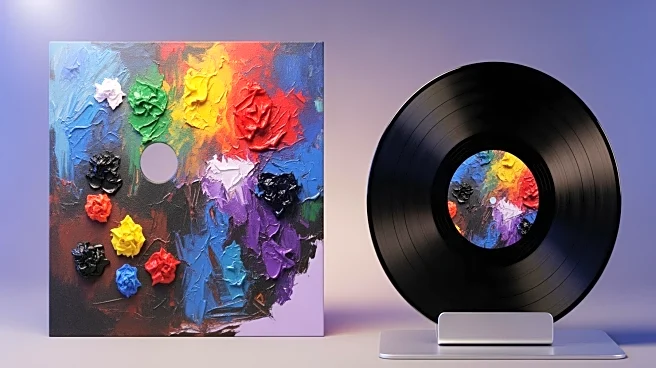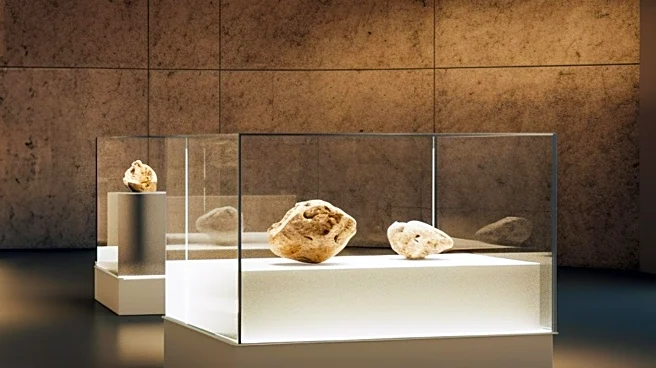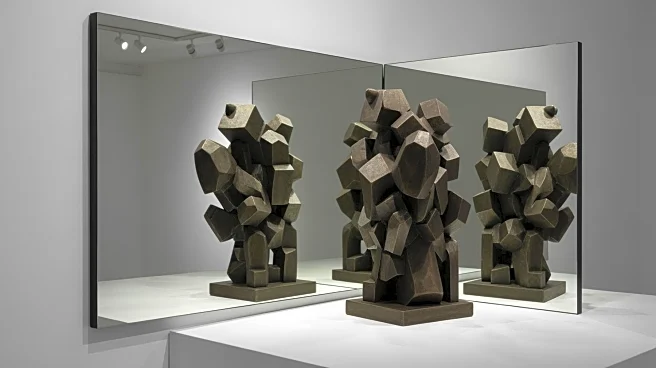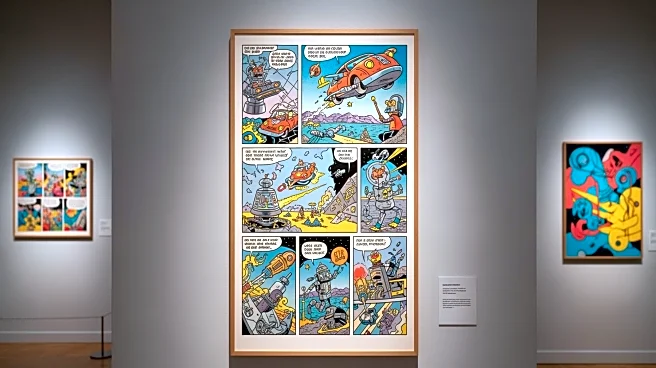What's Happening?
The V&A Museum in London has unveiled an exhibition featuring items associated with Marie Antoinette, including a guillotine blade purportedly linked to her execution during the French Revolution. The exhibition, titled 'Marie Antoinette Style,' showcases
various artifacts from the queen's final days, such as her last written note and a plain linen chemise she wore in prison. Marie Antoinette, known for her extravagant lifestyle, faced a dramatic downfall as revolutionaries forced the royal family to leave Versailles in 1789. She was executed on October 16, 1793, after being imprisoned and charged with treason. The exhibition aims to explore her legacy as a style icon and the public fascination with her tragic end.
Why It's Important?
The exhibition at the V&A Museum highlights the enduring intrigue surrounding Marie Antoinette's life and death, reflecting broader historical and cultural interests in the French Revolution. By displaying items linked to her execution, the museum taps into the public's fascination with historical figures and their dramatic stories. This exhibition not only serves as a cultural exploration but also underscores the impact of historical narratives on contemporary society. It provides insights into the societal shifts during the French Revolution and the role of monarchy, offering a deeper understanding of the period's political and social dynamics.
What's Next?
The exhibition 'Marie Antoinette Style' will be on display at the V&A Museum until March 22, 2026, allowing visitors ample time to explore the artifacts and learn about the queen's legacy. The museum may continue to host similar exhibitions that delve into historical figures and events, potentially sparking further interest and discussions about the French Revolution and its impact. As the exhibition progresses, it may attract historians, cultural enthusiasts, and educators, fostering a broader dialogue about the significance of historical exhibitions in preserving and interpreting past events.
Beyond the Headlines
The exhibition raises questions about the ethical implications of displaying items linked to executions and the portrayal of historical figures. It invites reflection on how history is curated and presented to the public, and the potential influence of such exhibitions on cultural memory and identity. The fascination with Marie Antoinette's story also highlights the intersection of history, art, and popular culture, demonstrating how historical narratives can be reimagined and appreciated in modern contexts.
